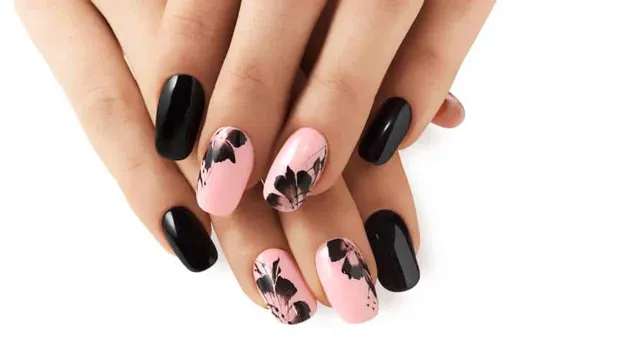Have you ever found yourself with a tube of Liquid Nails handy and wondering if you can paint over it? Liquid Nails is a popular adhesive used for bonding everything, from wood to metal, but what happens when you need to conceal it with paint? Can you paint over Liquid Nails easily, or will it create a sticky situation? In this blog post, we will explore all your questions about painting over Liquid Nails, including proper preparation, tools needed, and possible outcomes. Whether you are repairing a cracked surface or redesigning a wall, painting over Liquid Nails can provide a seamless finish, but it requires some crucial steps to avoid a frustrating result. So, let’s dive in and find out if painting over Liquid Nails is possible and how to do it the right way!
Understanding Liquid Nails
If you’re wondering whether you can paint over Liquid Nails, the answer is yes, you can. However, you should keep in mind that Liquid Nails is not a primer or paint. It’s an adhesive that’s designed to bond surfaces together.
And while it may seem like a good idea to paint over it after it dries, you might run into issues such as the paint not sticking properly. The best way to ensure proper paint adhesion is to prime the surface first. That way, you’ll have a base coat that the paint can adhere to.
Additionally, if the Liquid Nails was used in a high-moisture area, it’s important to make sure it’s completely dry before painting over it. Overall, while Liquid Nails can be painted over, it’s important to take the necessary precautions to ensure the paint sticks properly and the end result is the one you desire.
Composition of Liquid Nails
Liquid Nails is a type of adhesive that is commonly used in DIY projects. It is a versatile product that can be used on various surfaces, including wood, metal, concrete, and even plastic. The composition of Liquid Nails contains a blend of synthetic rubber and polyurethane resins, which makes it a strong and durable adhesive.
The product contains solvents that help in the application and drying process. Liquid Nails is also water-resistant, making it suitable for use in areas that are exposed to moisture. Overall, Liquid Nails is an excellent choice for DIYers who want a reliable and long-lasting adhesive for their projects.

Bonding Properties of Liquid Nails
Liquid Nails is a popular adhesive that is widely used in the construction and home renovation industry. This multipurpose glue is designed to bond a variety of surfaces, including wood, metal, and concrete, among many others. The bonding properties of Liquid Nails are quite impressive, making it a go-to solution for many builders and DIY enthusiasts.
Once applied, the adhesive creates a strong bond that is resistant to water, heat, and vibrations. This makes it ideal for use in areas that are prone to moisture, such as bathrooms and kitchens. Furthermore, Liquid Nails is incredibly easy to use, as it comes in a handy tube that can be easily dispensed and applied onto surfaces.
Its bonding strength and versatility make it one of the most popular adhesives in the market today.
Preparing the Surface for Paint
If you’re wondering if you can paint over Liquid Nails, the answer is yes, but you need to prepare the surface properly first. Liquid Nails is a construction adhesive that is commonly used to bond building materials together. It’s a tough adhesive that creates a strong bond, and if you try to paint over it without proper preparation, your paint job may not adhere properly and could crack or peel.
To prepare the surface for paint, you need to sand the area where the adhesive was applied with a medium-grit sandpaper until it’s smooth and free of any bumps or ridges. It’s important to wear a dust mask and eye protection during this process as sanding can create harmful dust. Once the surface is smooth, wipe it down with a damp cloth to remove any debris or dust.
After that, you can proceed to apply primer and paint as usual. By taking these steps, you can successfully paint over Liquid Nails and achieve a smooth and long-lasting finish.
Surface Cleansing
Surface cleansing is an essential aspect of preparing any surface for paint. It involves removing any loose material, dirt, grease, and debris from the surface to ensure that the paint adheres well and lasts longer. The first step is to scrape off any loose paint or material.
A power washer can then be used to remove any dirt or loose debris. It is crucial to wait for the surface to dry completely before proceeding. Once it’s dry, the surface can be cleaned with a detergent solution and then rinsed with water.
Any oily or greasy stains can be removed using a degreaser. Finally, the surface needs to be sanded to ensure the paint has a good grip. Taking adequate preparation measures will ensure the paint adheres well and looks great for years to come.
Surface Sanding
Surface sanding is an essential part of preparing a surface for paint. It involves using a sandpaper to smooth out any bumps and roughness on the surface. This process helps the paint adhere better and ultimately creates a smoother and more professional finish.
The type of sandpaper used will depend on the surface being sanded, but it’s generally best to start with a coarse grit and work your way up to a finer grit. It’s important to wear appropriate safety gear like gloves and a mask to protect yourself from inhaling any dust or particles. Additionally, you should make sure the surface is free of any debris and dust before painting to ensure a clean and successful paint job.
Taking the time to properly sand the surface may require some extra effort, but it will be worth it in the end when your paint job looks flawless.
Surface Priming
Surface priming is an essential step in preparing a surface for painting. Priming helps create a smooth base for paint to stick to and ensures the paint job lasts longer. It also helps block stains, prevents future paint peeling, and reduces the number of coats of paint needed.
Proper surface preparation is crucial before priming, which includes cleaning, sanding, and filling any cracks or holes. An analogy for surface priming could be compared to preparing a canvas for painting. Just like a painter wouldn’t want to paint on a dirty or damaged canvas, a surface must be prepped before applying paint to achieve the best results.
So, it’s vital to select the appropriate primer for your surface and project to ensure optimal results. By using a high-quality primer, you’ll create a long-lasting and professional-looking paint job.
Painting Over Liquid Nails
If you’ve used Liquid Nails adhesive to bond different surfaces, you may be wondering if it’s safe to paint over it. Can you paint over Liquid Nails? The answer is yes, but you’ll need to take some precautions. First, make sure the adhesive has completely cured before painting.
This typically takes at least 24 hours, but the manufacturer’s instructions may provide more specific guidance. It’s also important to note that Liquid Nails are not designed to be painted over with all types of paints. Oil-based paints and many solvent-based paints may cause the adhesive to soften or dissolve, so it’s best to use a water-based paint.
Additionally, be sure to clean the surfaces properly before painting and use a high-quality primer before applying your paint. By following these steps, you can ensure a successful paint job without compromising the strength of your adhesive bond.
Type of Paint
When it comes to painting over liquid nails, the type of paint you choose is important. First and foremost, make sure the liquid nails are cured and fully dried before attempting to paint over them. Once they are ready, choose a paint that is compatible with the type of surface the liquid nails are adhered to.
For example, if the liquid nails are on a metal surface, choose a paint specifically formulated for metal. Additionally, consider the finish you want for your paint job. High gloss finishes may show imperfections in the liquid nails more than matte or satin finishes.
Ultimately, the key is to choose a high-quality paint that will stick to the surface and provide a smooth, even finish.
Method of Application
When it comes to painting over Liquid Nails, there is a method you need to follow to ensure the best results. Firstly, make sure that the Liquid Nails adhesive is completely dry before painting over it. This can take up to 24 hours depending on the humidity and temperature in the room.
Once the adhesive is dry, lightly sand the surface to remove any bumps or imperfections. Then, apply a primer to the surface to create a smooth and even base for the paint. Finally, you can apply your desired paint color over the primer.
Remember, it is important to let each layer dry completely before moving onto the next one. By following these steps, you can achieve a flawless finish when painting over Liquid Nails.
Conclusion
In conclusion, while it may be tempting to paint over Liquid Nails, it is not recommended as it can compromise the strength and adhesive properties of the product. It’s like trying to cover up a bad haircut with a hat – it may solve the immediate problem, but it’s not a long-term solution. So, unless you want your DIY project to fall apart faster than a house of cards, it’s best to leave the Liquid Nails unpainted and find a more suitable solution for your aesthetic needs.
“
FAQs
What is Liquid Nails?
Liquid Nails is a brand of strong, multipurpose adhesive that can be used for bonding a variety of materials together.
Can you paint over Liquid Nails?
Yes, you can paint over Liquid Nails once it has completely cured. However, it is recommended to use a high-quality, oil-based paint for best results.
How long does it take for Liquid Nails to dry?
The drying time for Liquid Nails can vary depending on factors such as temperature, humidity, and the type of materials being bonded. However, it typically takes 24 hours for the adhesive to cure completely.
Is Liquid Nails waterproof?
Yes, Liquid Nails is waterproof once it has cured completely. This makes it a great choice for outdoor projects and applications in wet environments.
Can Liquid Nails be used on drywall?
Yes, Liquid Nails can be used on drywall. However, it is important to make sure the surfaces are clean, dry, and free from dust before applying the adhesive.
Can Liquid Nails be removed?
Yes, Liquid Nails can be removed using a scraper or putty knife. However, this can be a difficult and time-consuming process, especially if the adhesive has been allowed to fully cure.
Can Liquid Nails be used on plastic?
Yes, Liquid Nails can be used on certain types of plastic, such as PVC and polycarbonate. However, it is important to check the manufacturer’s instructions to ensure compatibility with the specific type of plastic being used.






